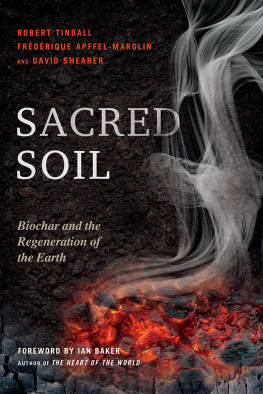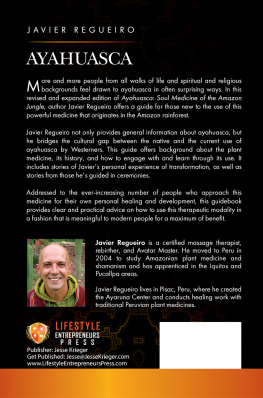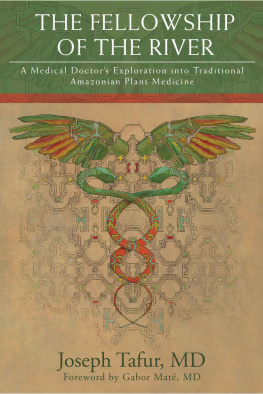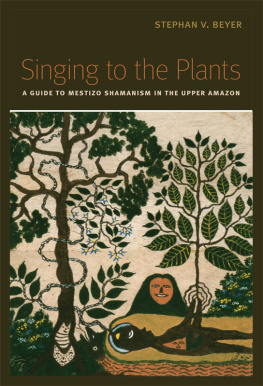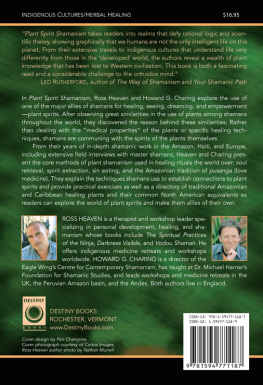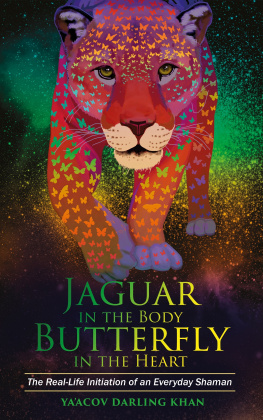
For my beloved pilgrim, Susana
THE JAGUAR THAT ROAMS THE MIND
Like the twists and turns of ayahuasca, the sacred vine of the Amazon, this wonderful narrative of love and self-discovery connects vast inner worlds of dream and vision, power and magic, with a passionate pilgrimage in time and space. A joy to read.
LUIS EDUARDO LUNA, AUTHOR OF AYAHUASCA READER: ENCOUNTERS WITH THE AMAZONS SACRED VINE AND COAUTHOR OF INNER PATHS TO OUTER SPACE
If you want to know what vegetalismo is really like, you could go to the Amazon, or you could read this book.
DALE PENDELL, AUTHOR OF PHARMAKO/GNOSIS: PLANT TEACHERS AND THE POISON PATH
ACKNOWLEDGMENTS
With gratitude I wish to recognize the entire web of relations that aided in the bringing forth of this book. I especially wish to thank Robert Aitken Roshi and Nelson Foster for their years of guidance in the Way, as well as William Merwin, who first opened my eyes to the sentience of nature and how the whole of life is necessary for the whole of life.
Other generous spirits with whom I have had illuminating talks or at whose hands I have received succor are Louis Bluecloud, Sheelo Bohm, Dbora Bolsanello, Julia Caban, Judyth Collin, Robert and Meg Ellis, Lia Gatey, Sean Kerrigan, Lorna Li, Maryann Lipaj, Jeremy Narby, Dale and Laura Pendell, Jen Sheffield, Gary Snyder, Kent Tindall, Pat Walsh, and Brad Yantzer.
To the scientific pioneers Philippe Bandeira de Melo of the Arca da Criaco and Jacques Mabit and Rosa Giove of the Centro Takiwasi, as well as the communities of Daime in Brazil, in gratitude for their welcome and for their endeavors to transmit the ancient ways of the rain forest to the modern world.
Finally, and above all, I wish to thank the master curandero Juan Flores Salazar and his partner, Sandra Encalada Guerra, for their welcome to Mayantuyacu. We arrived virtually penniless, and they put more water in the soup so we could stay.
Los Blancos son ms inteligentes, he said. The whites are more intelligent. Thats why they go to the Indians to get healed.
PEDRO JUAJIBIOY IN WADE DAVISS ONE RIVER
You could not find the ends of the soul though you traveled every way, so deep is its logos.
HERACLITUS
FOREWORD
Mark J. Plotkin, Ph.D.
While walking across Harvard Yard one afternoon in the late 1960s, the great ethnobotanist Richard Evans Schultes was hailed by a fellow Harvard professor. Greetings, Richard, he said. How was your recent expedition to Colombia?
Excellent, replied Schultes. Very productive. We found a new species of hallucinogen!
Just what we need at Harvardmore drugs! muttered his colleague as they headed back to their respective offices.
Schultes maintained his ever-calm demeanor. He never seemed troubled that his research was sometimes considered peculiar by some of his university colleagues. That these plants often played central roles in the lives of his beloved indigenous colleagues was more than enough proof that he had found something special.
How special is still being determined.
Schultes collected thousands of plants employed for medicinal purposes over the course of decades of research. Most have yet to be examined in detail in the laboratory, meaning that their potential importance to the world at large is not yet known. The magical mushrooms he collected in Oaxaca, Mexico, in the late 1930s, however, yielded compounds that helped give rise to the beta-blocker class of cardiac drugs (as well as the music of the 1960s). But perhaps his greatest discovery (and he disliked the term discovery, since he always insisted that the Indians found these plants first!), was the botanical identity of ayahuasca, the vine of the soul.
Schultes first encountered this powerful plant in the upper reaches of the Putumayo in the Colombian Amazon. He never failed to puzzle those who sought him out to learn about the effects and potential of the sacred remedio, as the Indians call it. Many is the time when I heard him tell some inevitably disappointed psychonautic pilgrim who had gone to great lengths to seek him out: It really didnt have much effect on meI just saw a few colors.
Of course, all great shamans have a bit of trickster in them.
I once mentioned Schultess comments to Pedro Juajibioy, a Kams Indian from the Sibundoy Valley of Colombia who had worked closely in the field with the great ethnobotanist for many years. Pedro smiled and shook his head. My uncle was a great taita [shaman], and he is the one who first gave Ricardo the remedio for the first time, he said. Schultes spent the whole night laughing, singing, and talking in his hammock. Because none of us spoke English, we have no idea what he saw or said!
Schultes steadfastly refused to write a popular account of his travels through the Amazon, but he did inspire the first noteworthy popular book on ayahuasca, The Yage Letters, by William S. Burroughs. Having read several of Schultess technical publications on the vine, Burroughs decided to visit the northwest Amazon to sample the brew. His account of this experiencein which he refers to Schultes as Dr. Schindlerhas never gone out of print.
Neither Schultes nor Burroughs could possibly have foreseen how this once-obscure Amazonian vine would become such an object of fascination to much of the rest of the world. Ayahuasca is sold on the Internet; whole web pages are devoted to its use; ayahuasca workshops are advertised in national magazines; and so many books have been written on the subject that excerpts have been collected into The Ayahuasca Reader.
As one would expect, the literature varies greatly in quality. Few of the articles and books are based on extensive experience regarding the use of this vine as a sacrament by the indigenous peoples who discovered it. This is why Robert Tindalls bookThe Jaguar that Roams the Mindis such a welcome and valuable addition to the canon.
While the typical heros journey involves a Westerner in search of knowledge heading to the mysterious Eastthe film Lost Horizon and W. Somerset Maughams The Razors Edge are two classic examplesTindall turns this model inside out. He starts in the northern deserts of the Sahara and heads west. The first stop is Rio de Janeiro, where the use of ayahuasca has been incorporated into not one but two state-recognized religions. He then heads west again, participating in religious ceremonies entailing the ritual consumption of the vine by Afro-Brazilians. Finally, he reaches the western Amazonthe original home of the vine of the soulwhere he has the opportunity to participate in traditional ceremonies with Indians of the Kaxinawa, Ashninca, Cocama, and Shipibo tribes.
Like all great literary heroes, Tindall meets the archetypes: the Herald, the Shadow, the Shapeshifter, and the Mentor. And he is a wounded protagonistafter an exceedingly difficult childhood, a strained relationship with his parents, and challenges with substance abuse, he is in search of healing and wholeness. That the balm he finds to heal those wounds proves to be a combination of ancient wisdom and beta-carboline alkaloids makes it all the more intriguing.
One of the great strengths of The Jaguar that Roams the Mind is Tindalls prose; he has a gift for making his characters come alive. His description of the lovely and haunting Susana is one of the books strong points. Tindall is skilled at evoking a sense of place, so the reader is right there with him as he moves from Morocco to Brazil and then to the Peruvian Amazon. And he is a student of both history and literature, making deft use of them as he draws parallels and analogies from sources as diverse as Shakespeare, the Bible,
Next page

